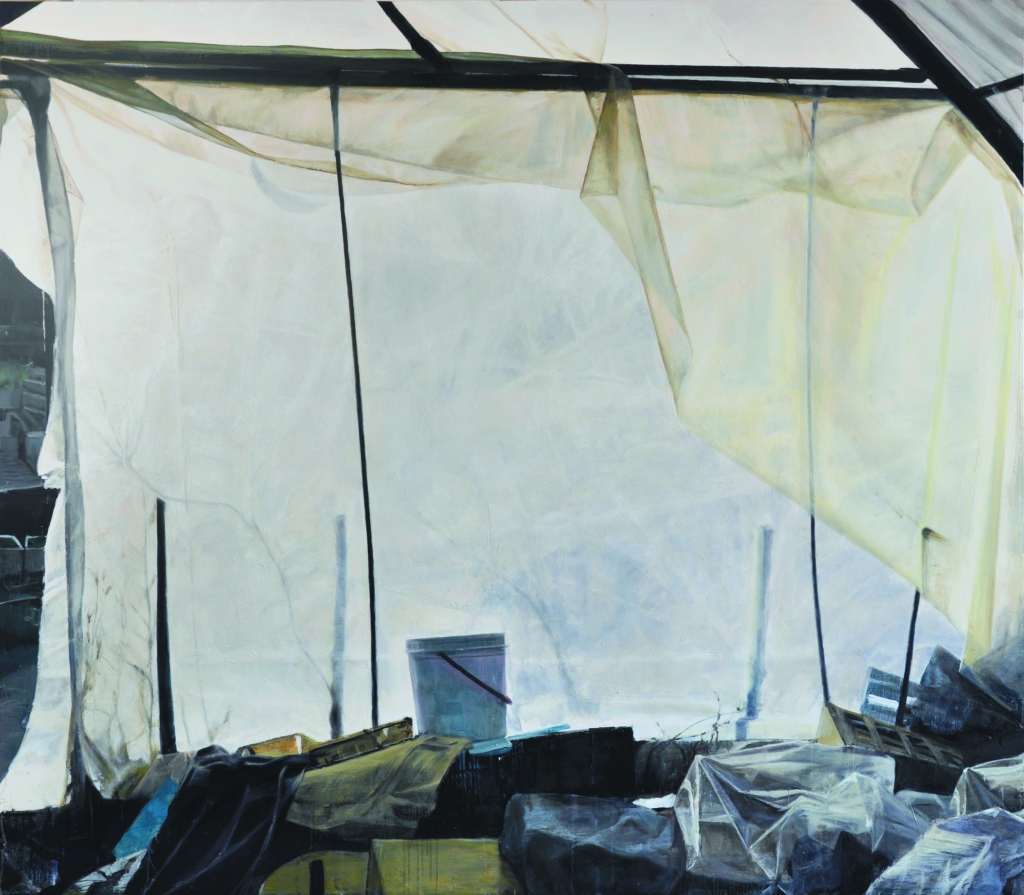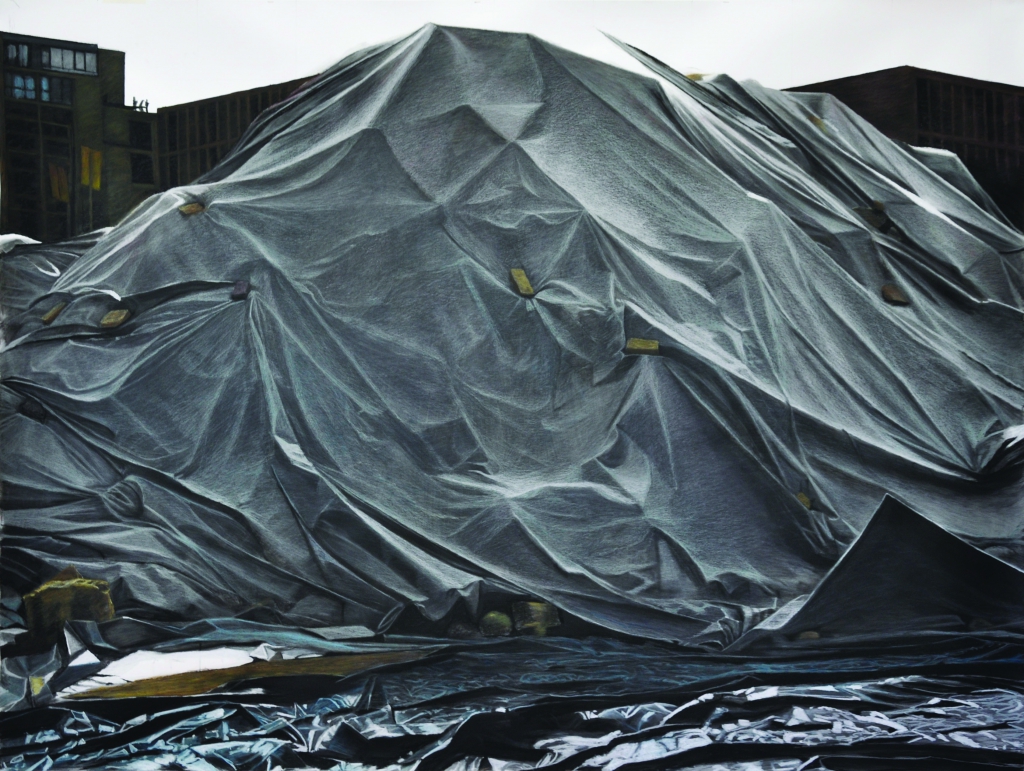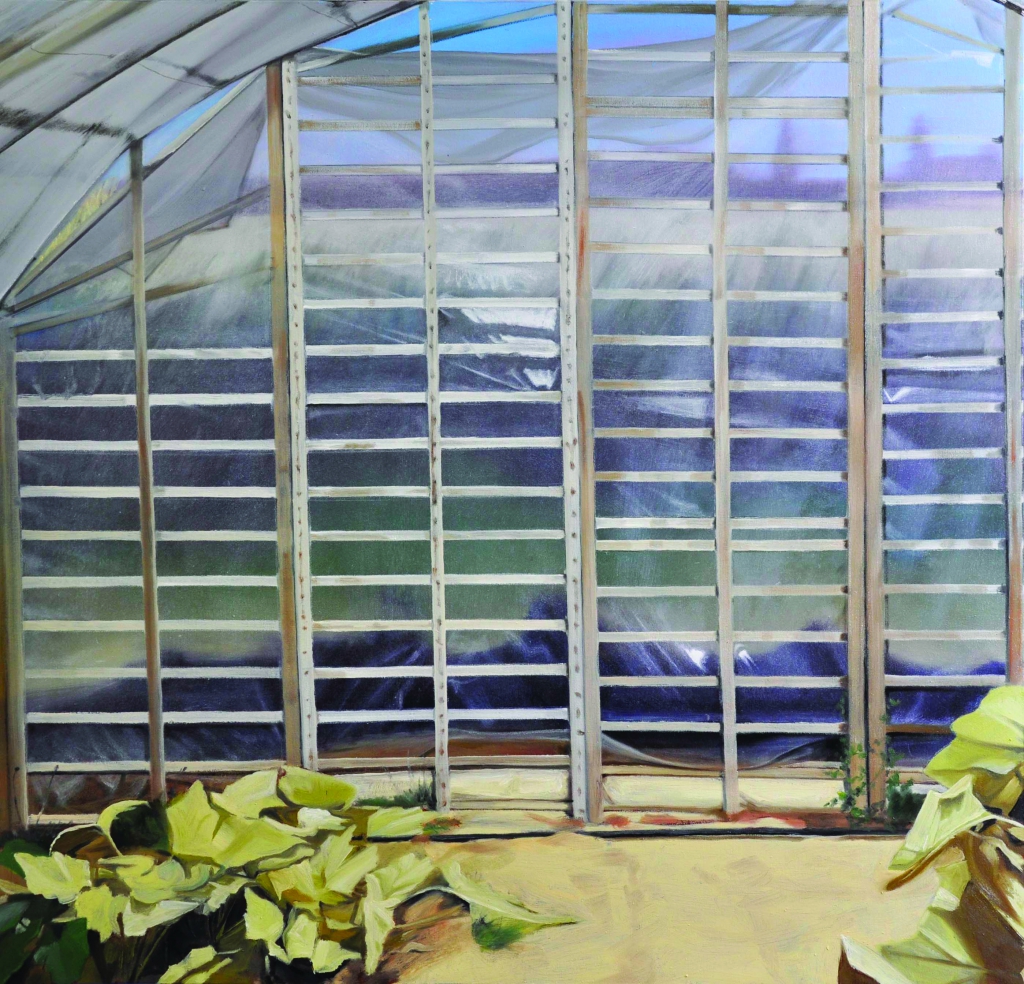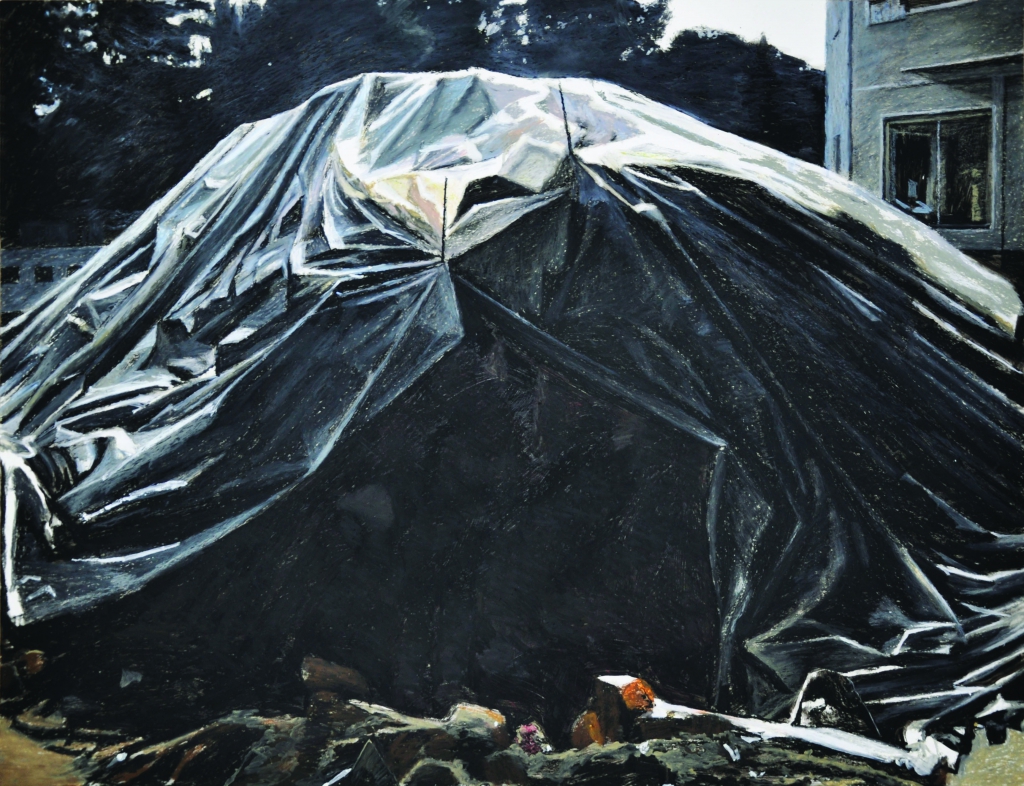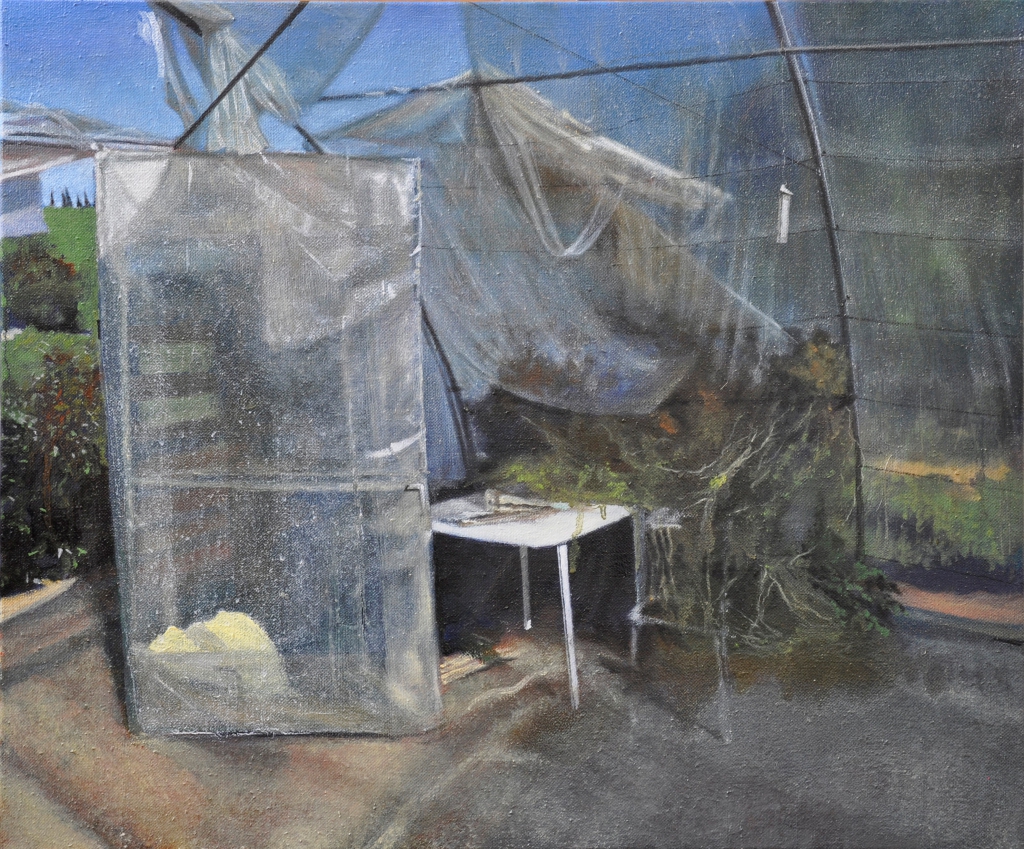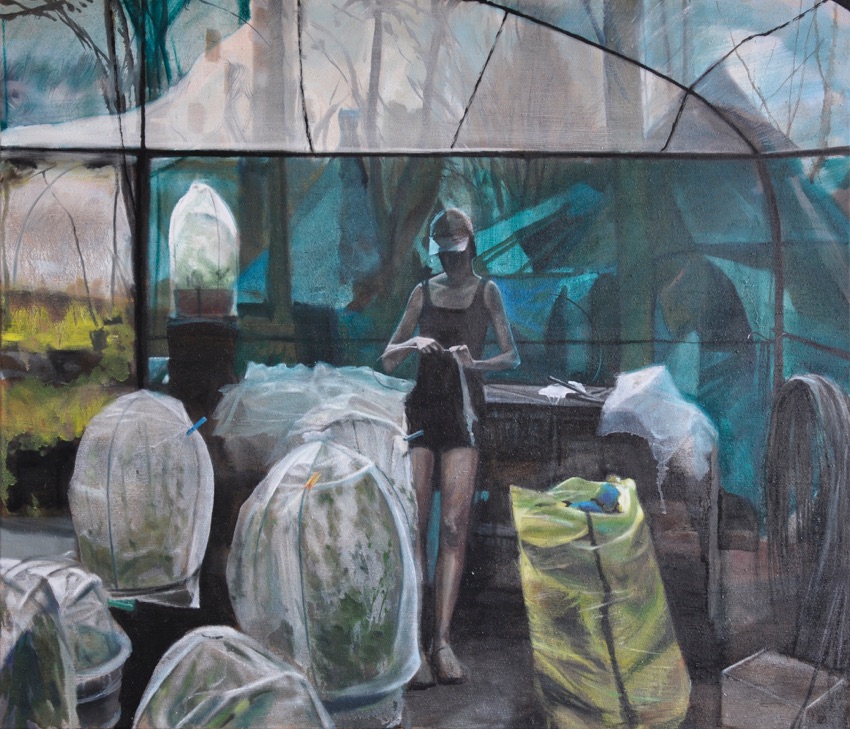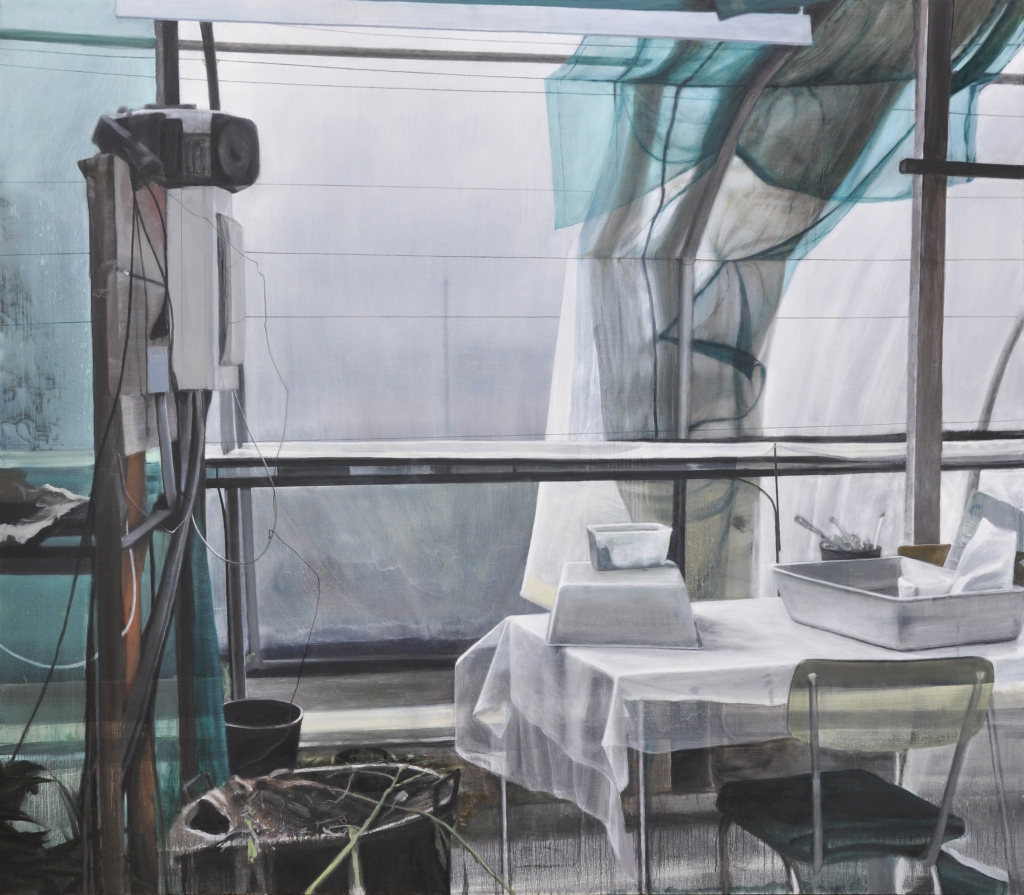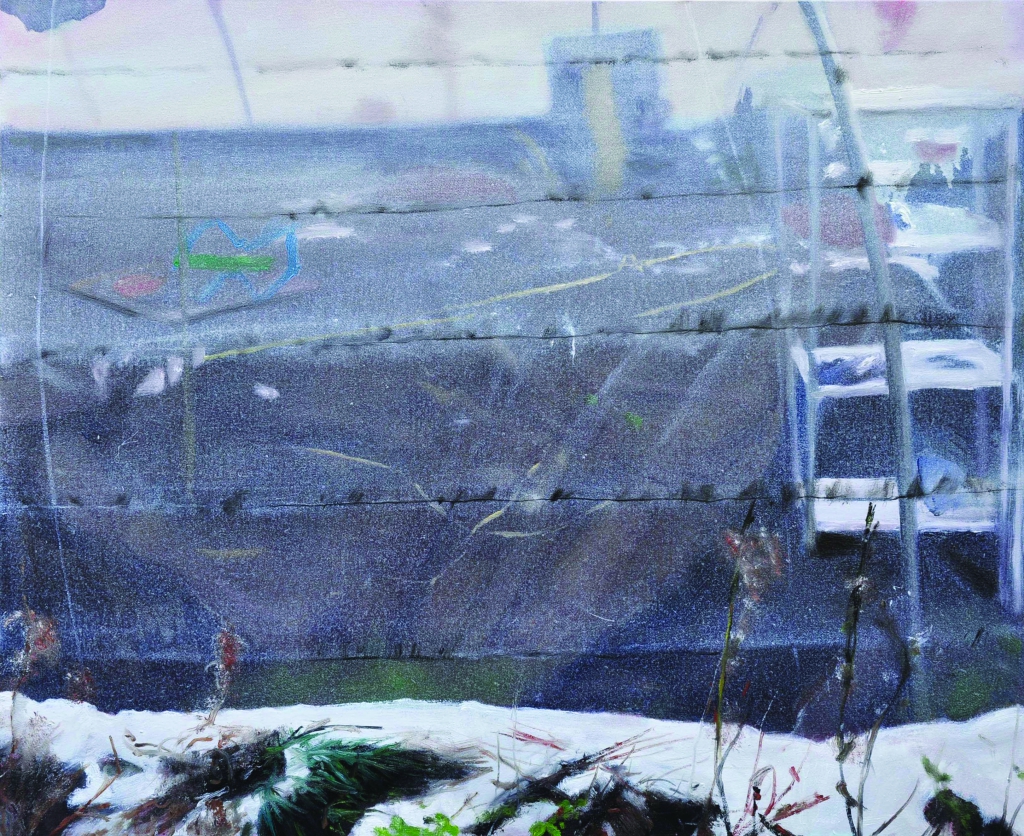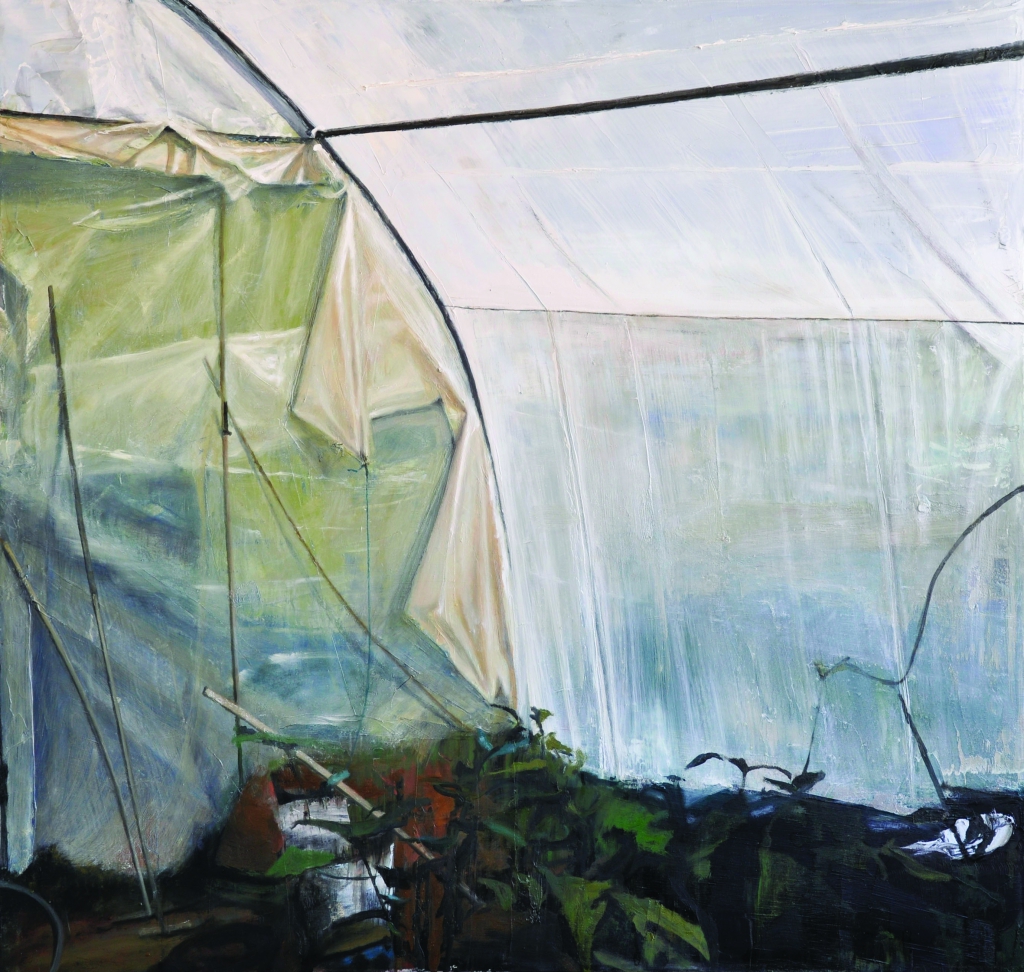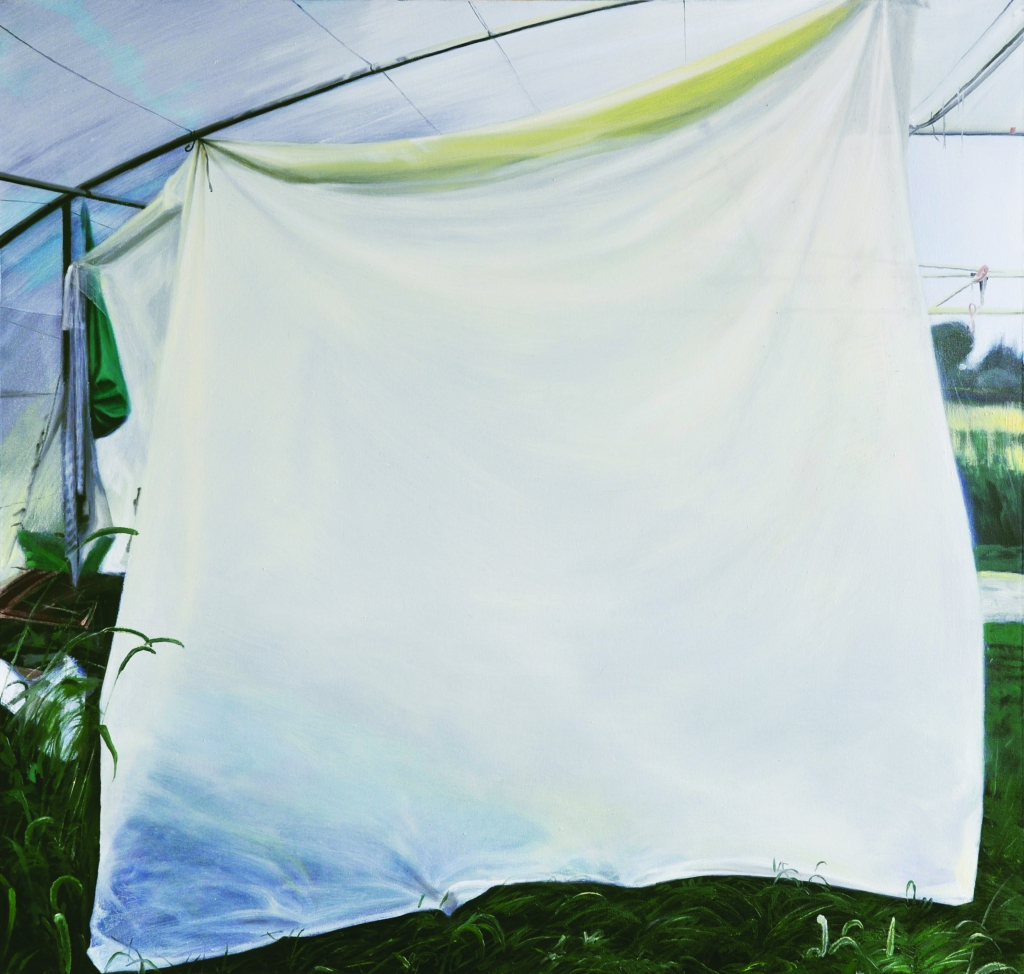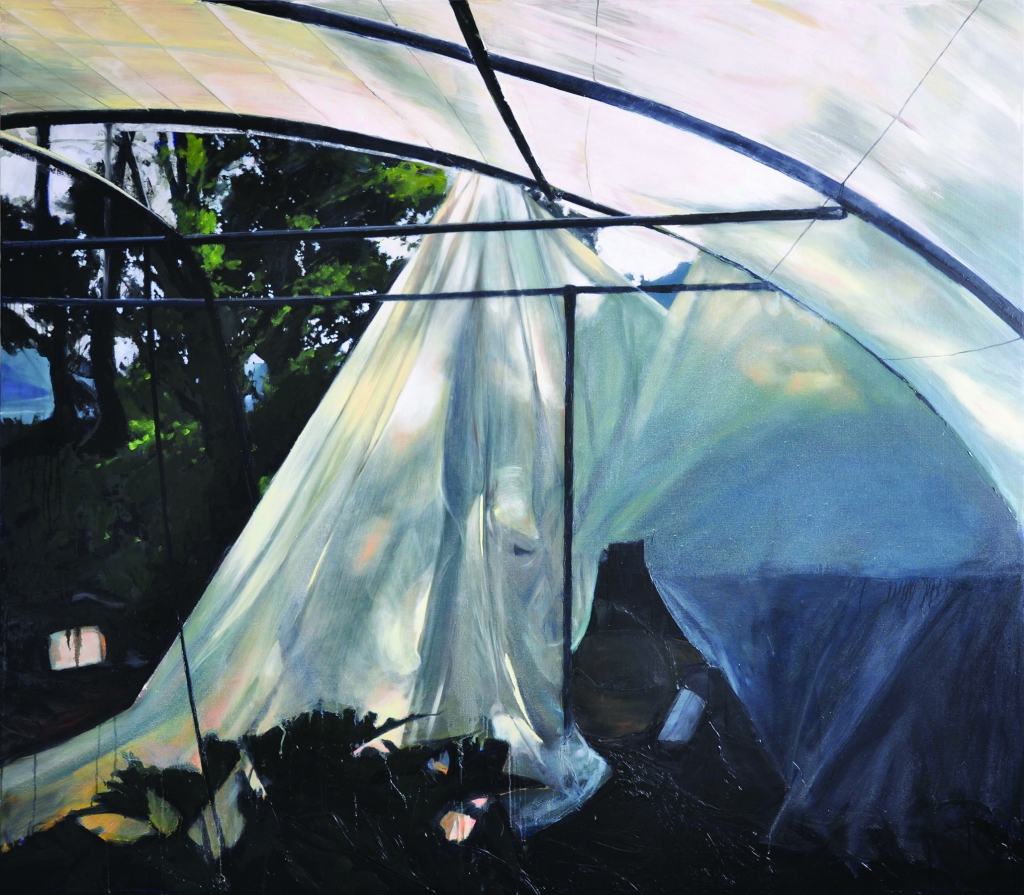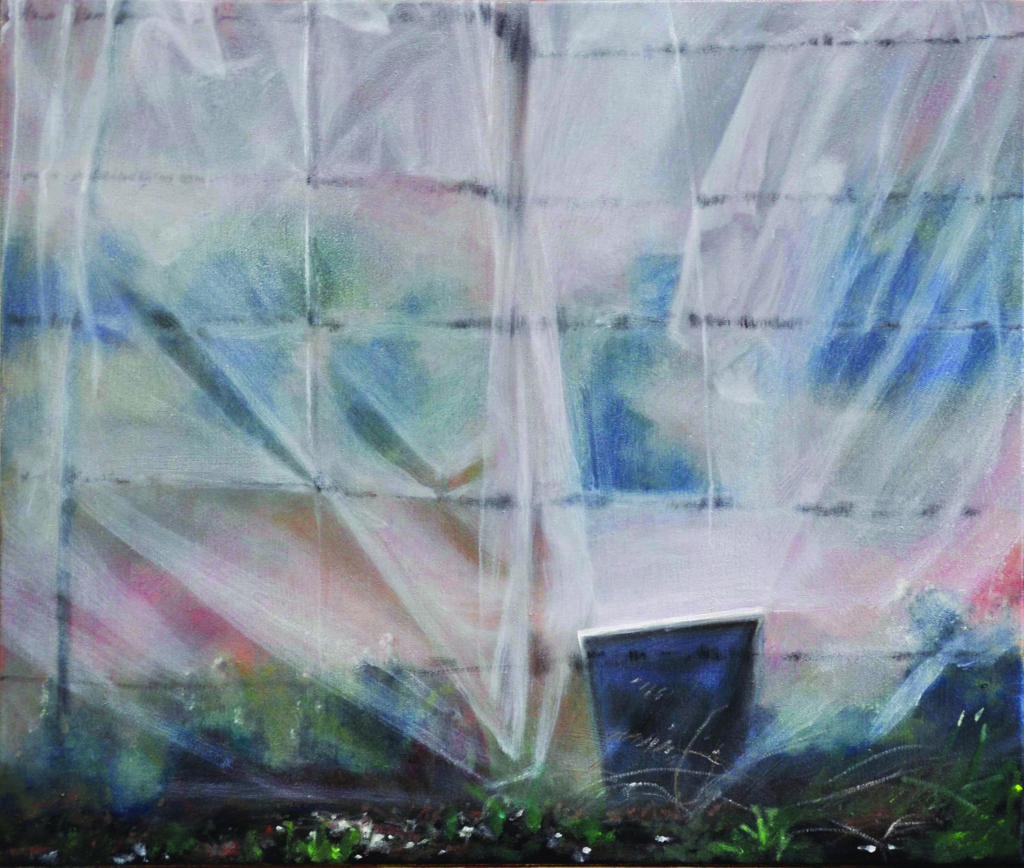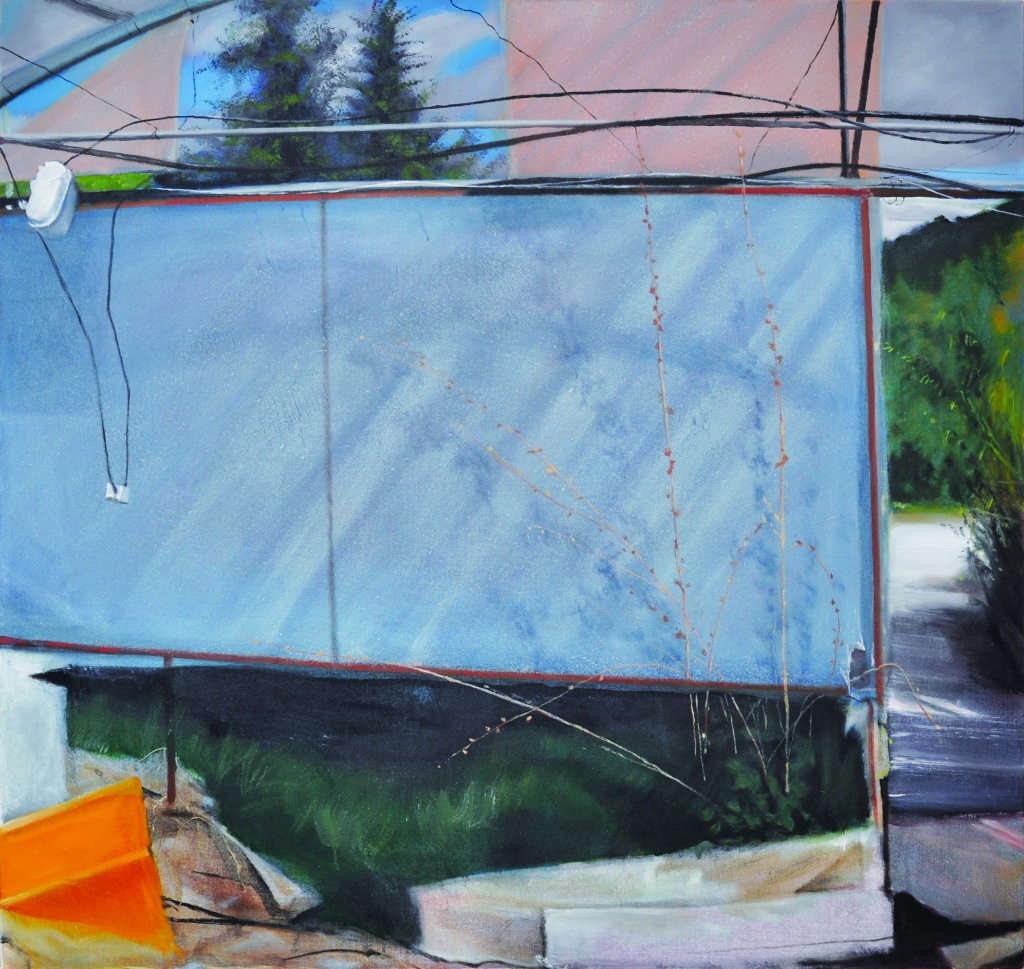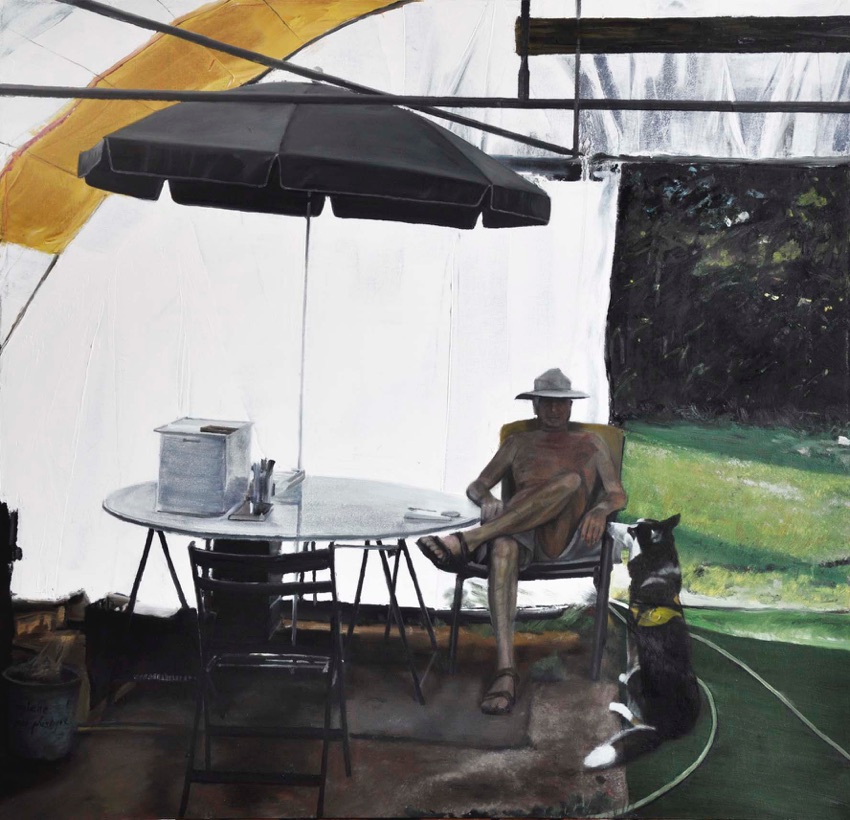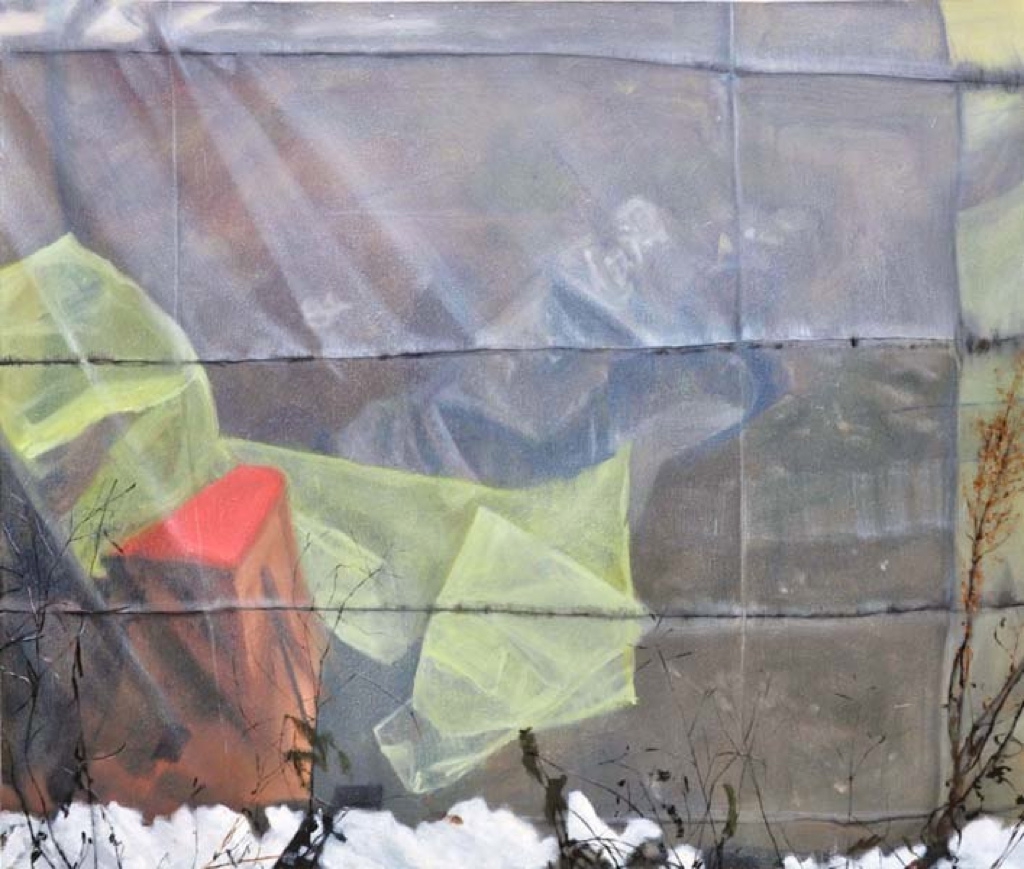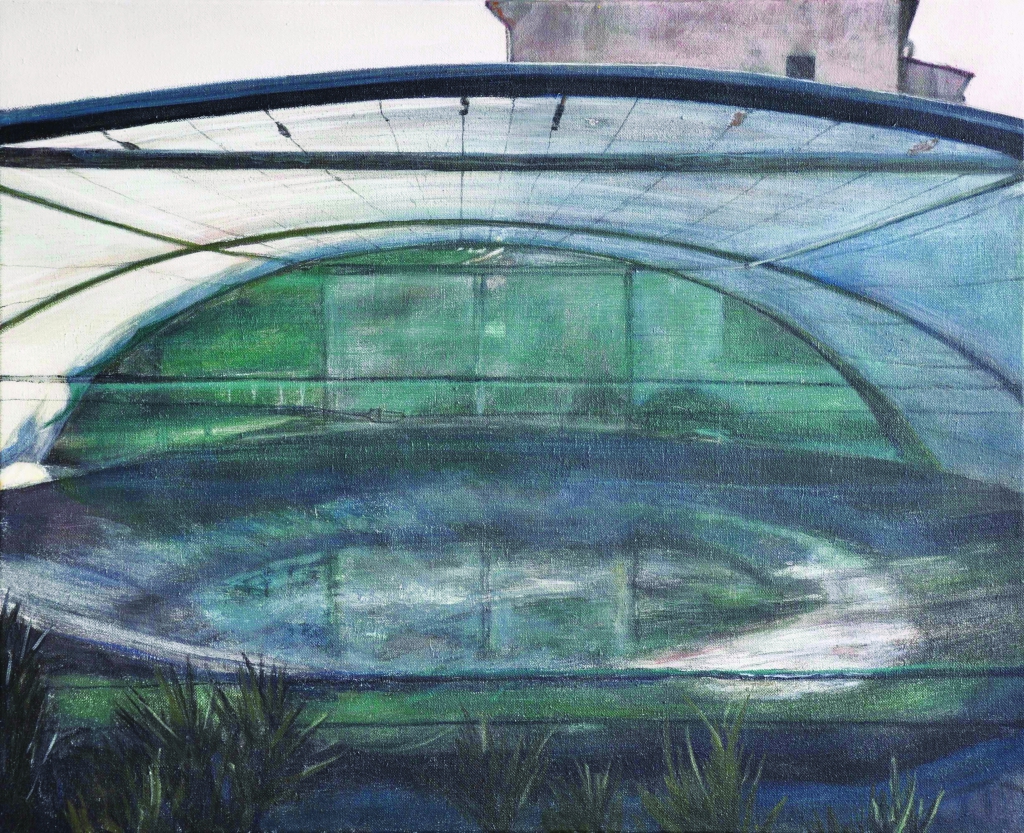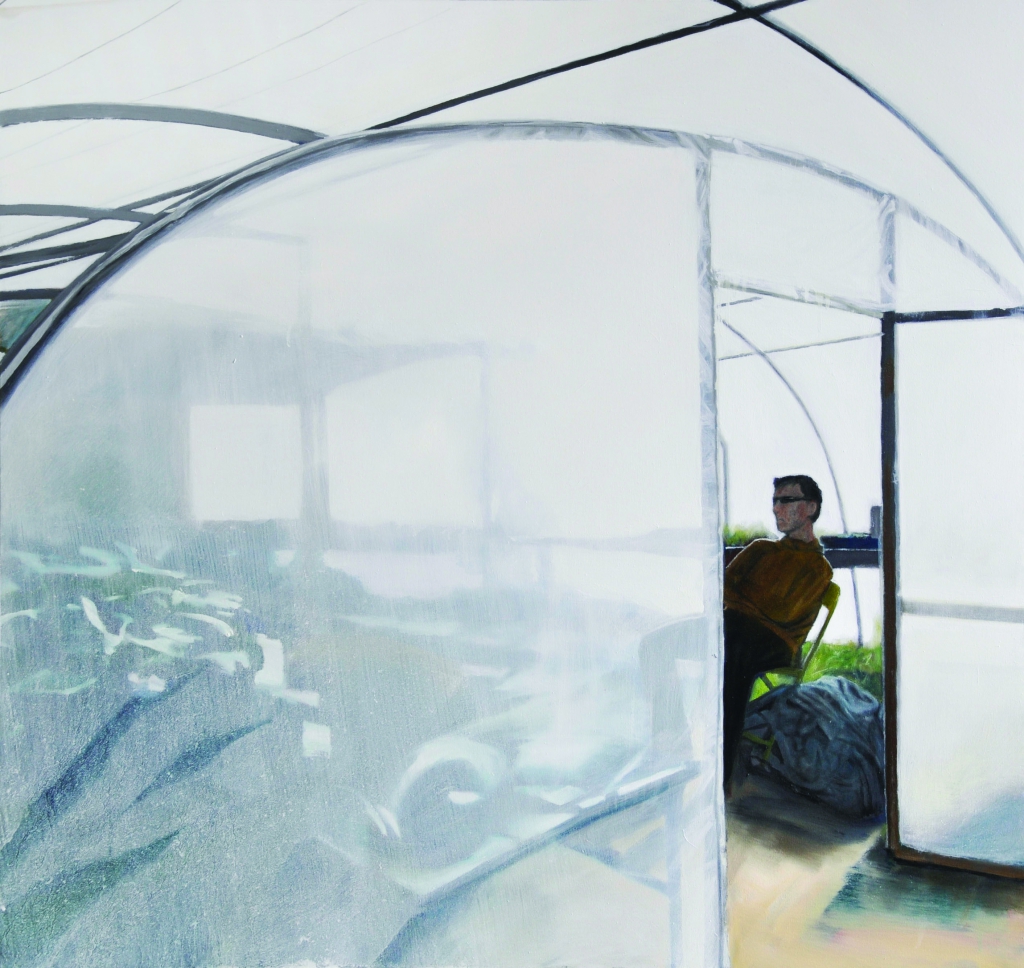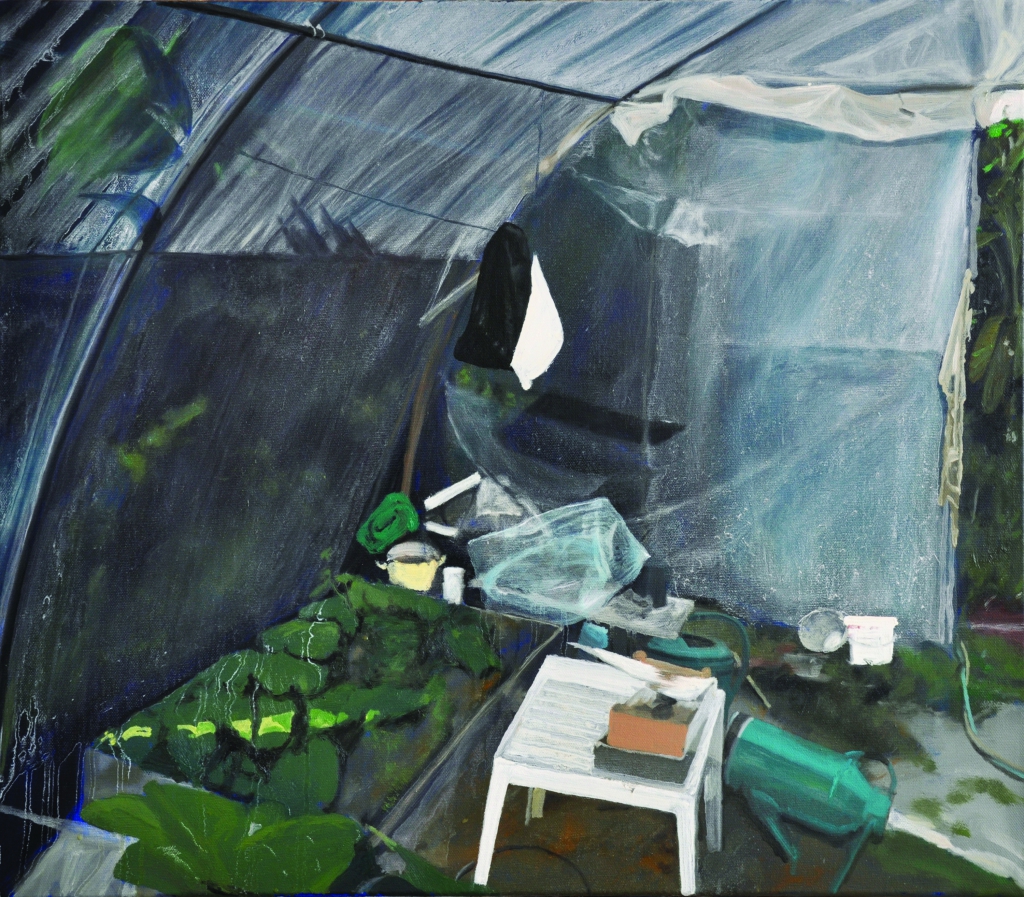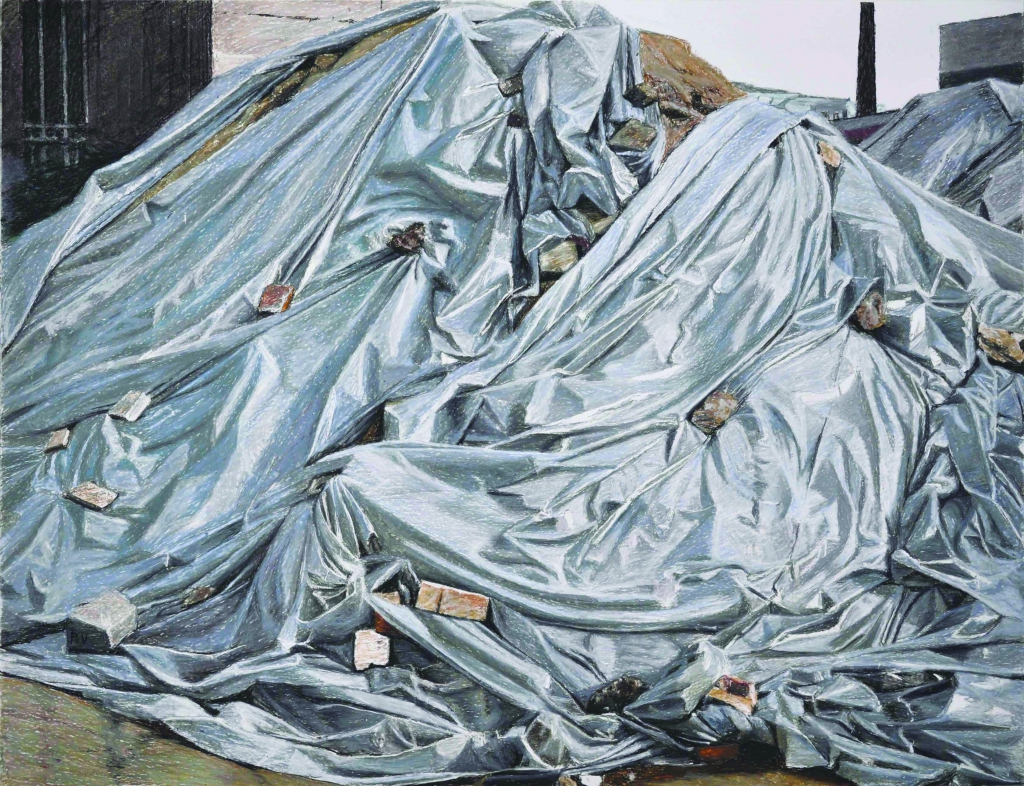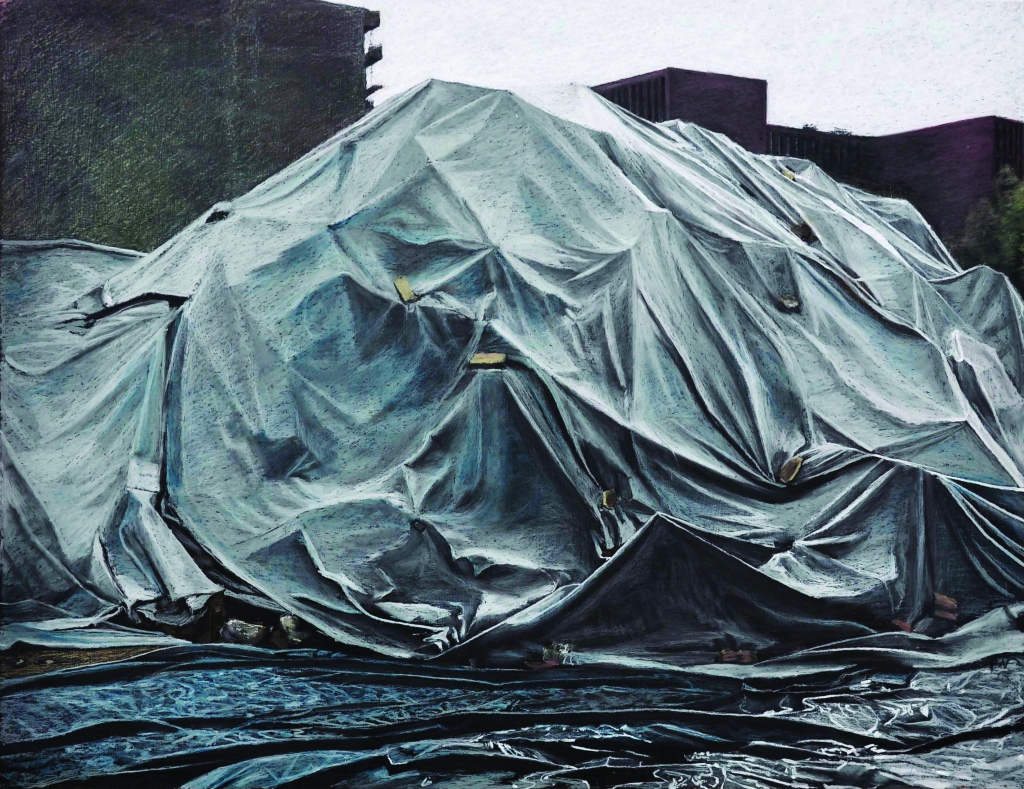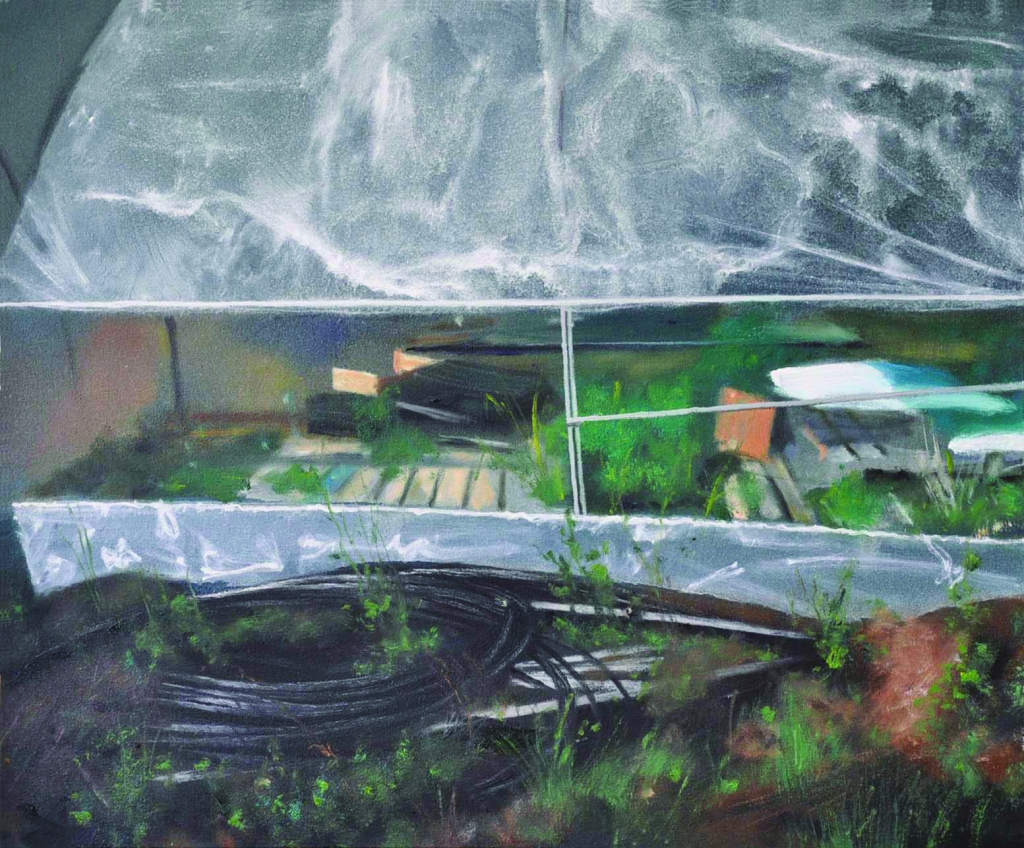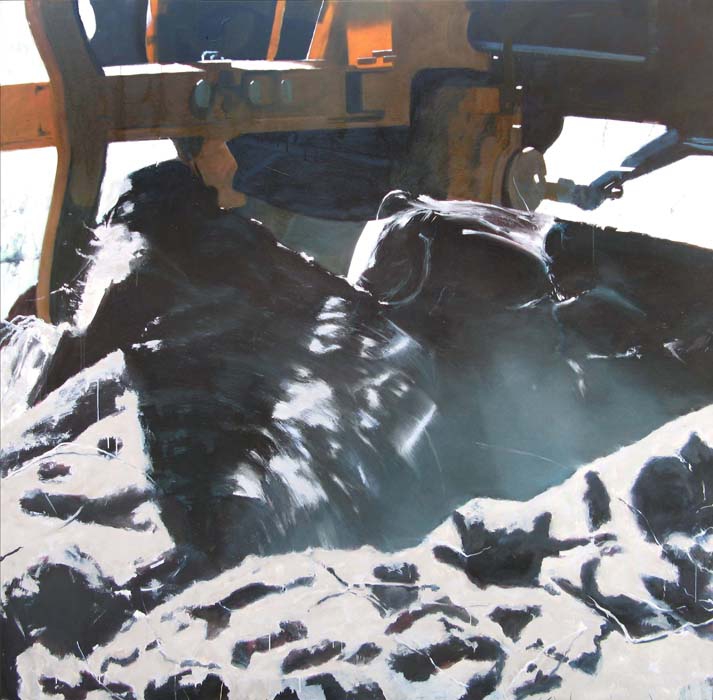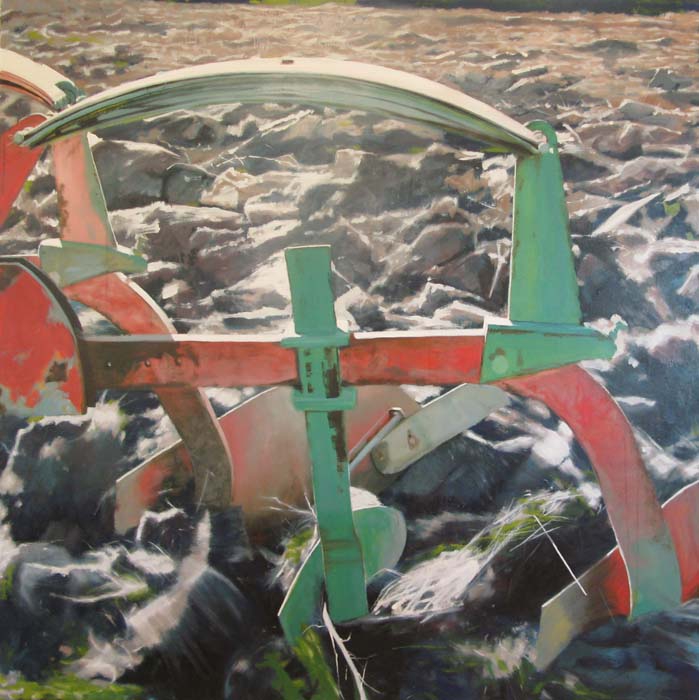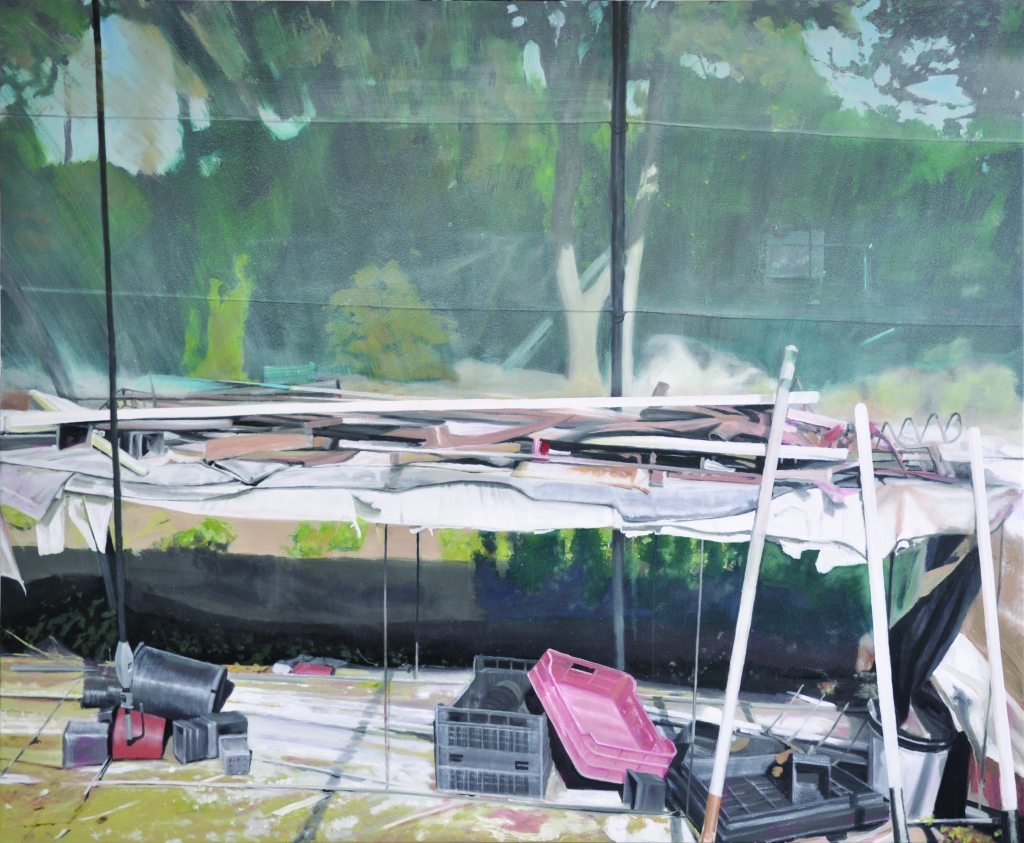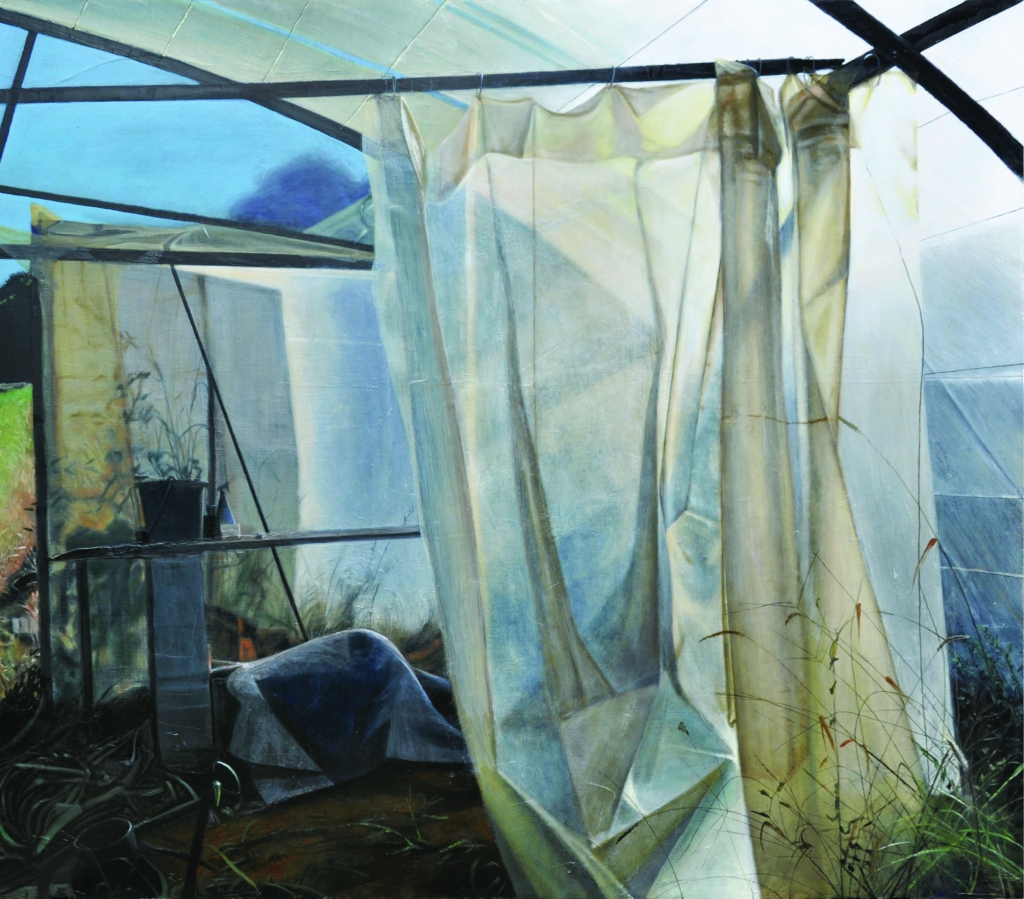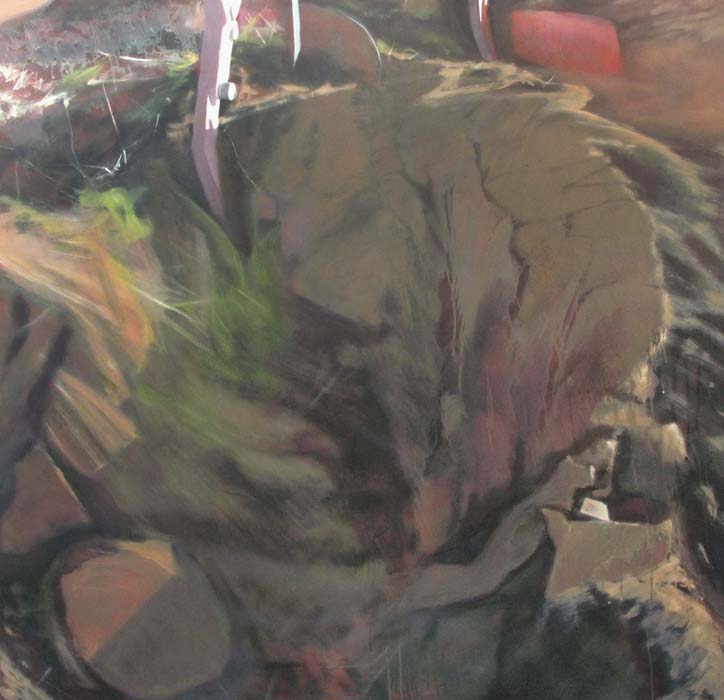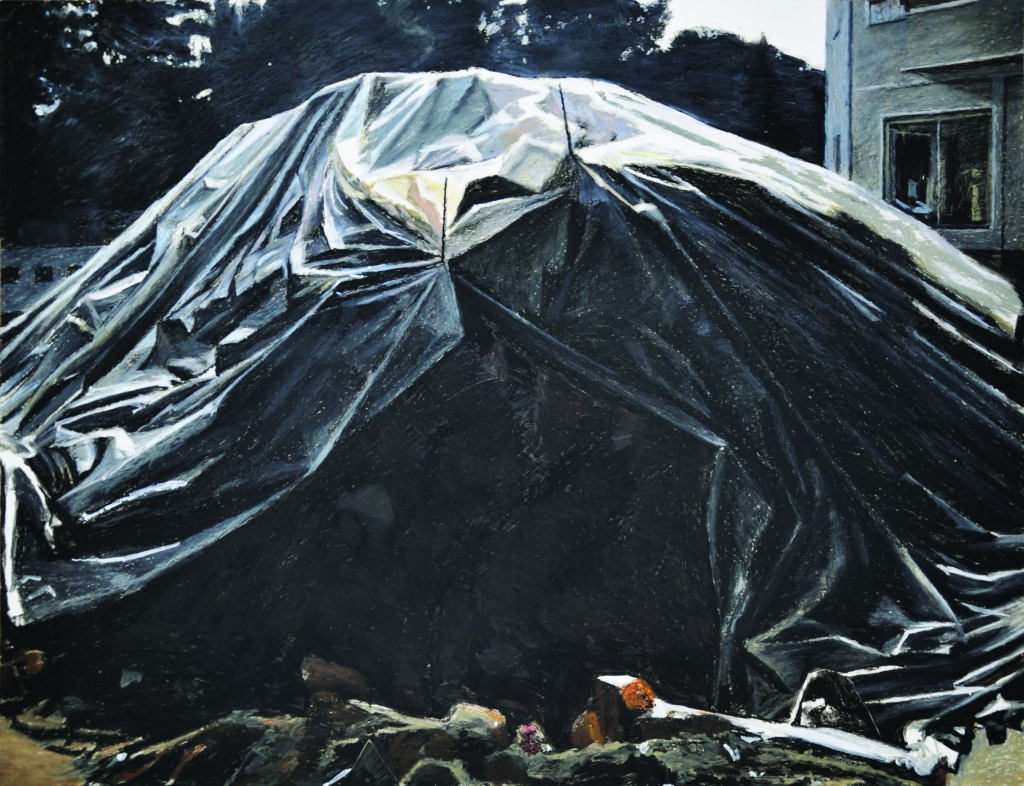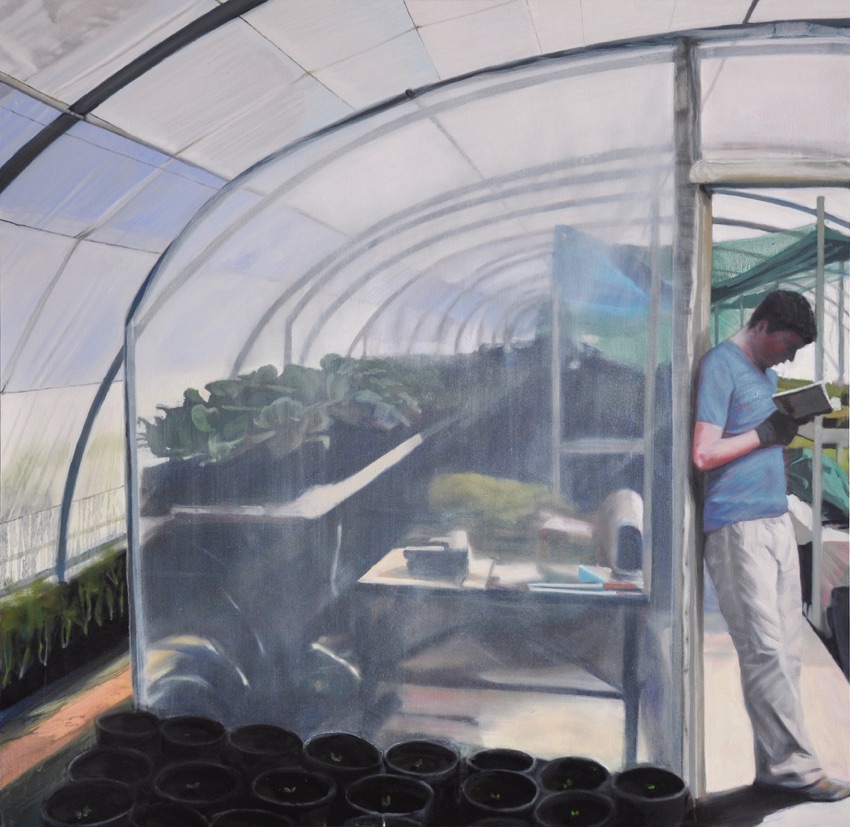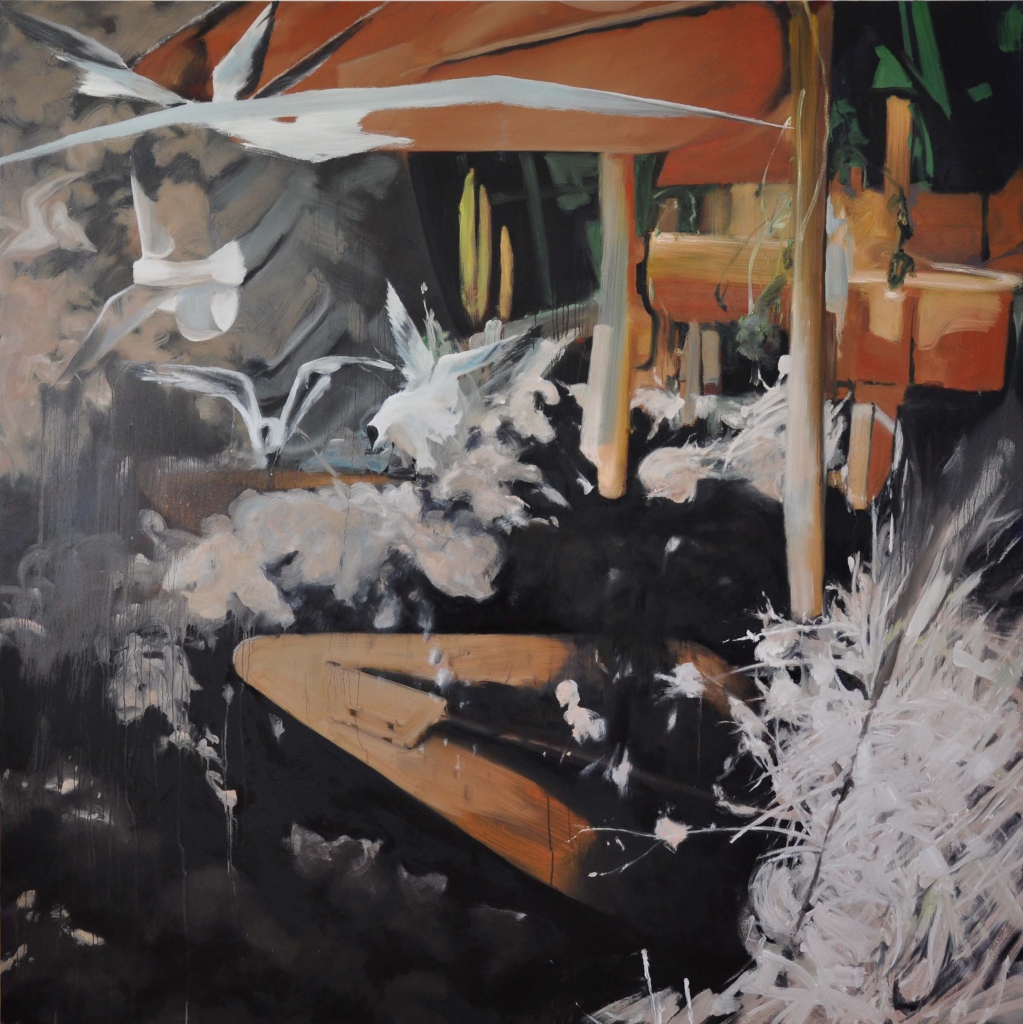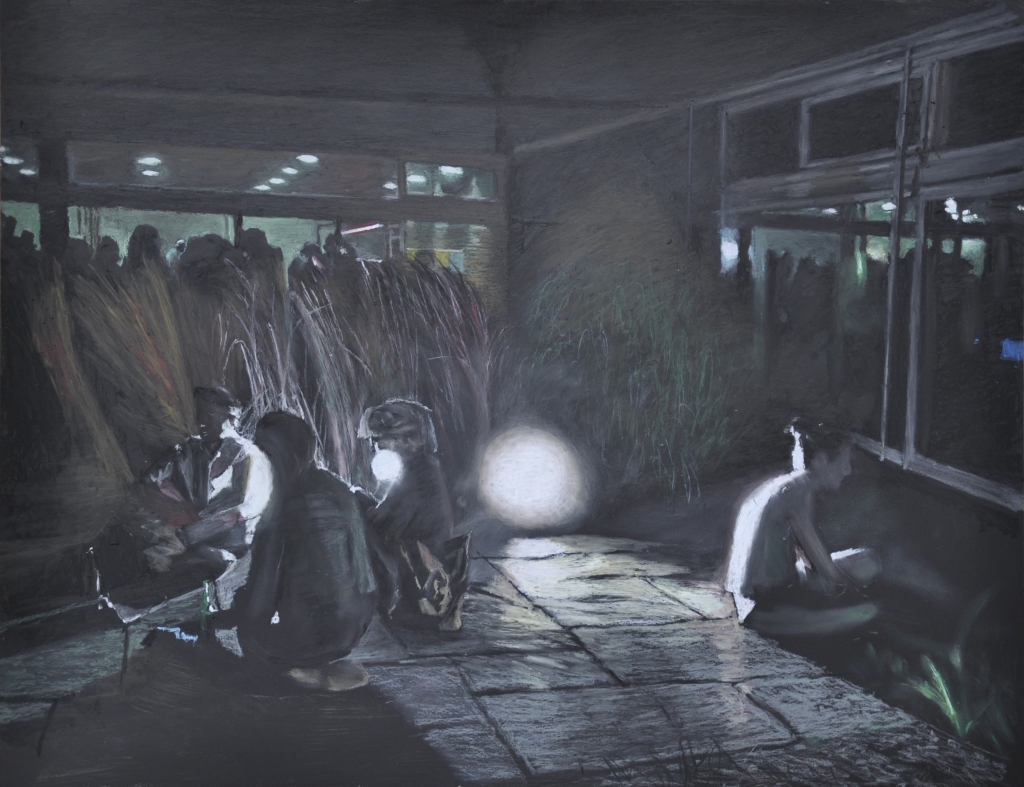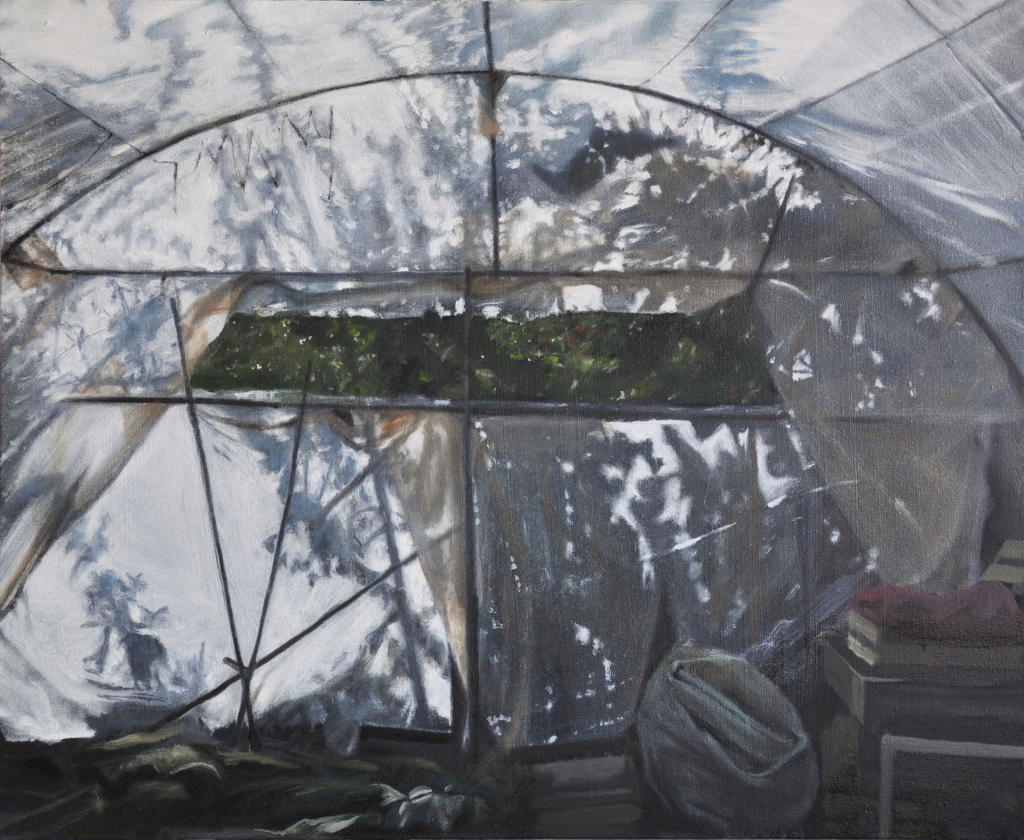PAUL VERGIER
PAUL VERGIER
The space is bathed in bright, white light. Its shell consists of plastic foil, a structural material with a
limited life span. The construction looks improvised, dividing walls seem to have been installed
belatedly, the foil fluttering in parts, shrunken, sagging, provisional. Order is virtually imperceptible.
Moreover, the life of the interior seems disparate: remnants and traces of human labor. Horticulture,
camping, workshop, storage; in these temporary plastic foil dwellings, anything seems possible. Paul
Vergier’s pictures tell of growth and withering away, emergence and disappearance. When human
figures appear – which is rare – they do so in a state of stasis, expectancy, a seated viewer, poised, a
reader absorbed in a book. The outside world is visible only through a filter, colors subdued, contours
diffuse and vague.
The exhibition title alludes to an analysis by the Polish-British sociologist Zygmunt Bauman, found
(among other places) in the book Liquid Life of 2005. According to Bauman, contemporary society is
found in a state of transition from “solid” to “liquid” modernity. Increasingly, firmly established, reliable
structures vanish, supplanted by insecurity and uncertainty. Stable social patterns and rules are now
absent. No frame of reference for human action and long-range planning is available any longer. Instead,
everyday life is composed of a succession of short-term projects and episodes
The space is bathed in bright, white light. Its shell consists of plastic foil, a structural material with a
limited life span. The construction looks improvised, dividing walls seem to have been installed
belatedly, the foil fluttering in parts, shrunken, sagging, provisional. Order is virtually imperceptible.
Moreover, the life of the interior seems disparate: remnants and traces of human labor. Horticulture,
camping, workshop, storage; in these temporary plastic foil dwellings, anything seems possible. Paul
Vergier’s pictures tell of growth and withering away, emergence and disappearance. When human
figures appear – which is rare – they do so in a state of stasis, expectancy, a seated viewer, poised, a
reader absorbed in a book. The outside world is visible only through a filter, colors subdued, contours
diffuse and vague.
The exhibition title alludes to an analysis by the Polish-British sociologist Zygmunt Bauman, found
(among other places) in the book Liquid Life of 2005. According to Bauman, contemporary society is
found in a state of transition from “solid” to “liquid” modernity. Increasingly, firmly established, reliable
structures vanish, supplanted by insecurity and uncertainty. Stable social patterns and rules are now
absent. No frame of reference for human action and long-range planning is available any longer. Instead,
everyday life is composed of a succession of short-term projects and episodes

